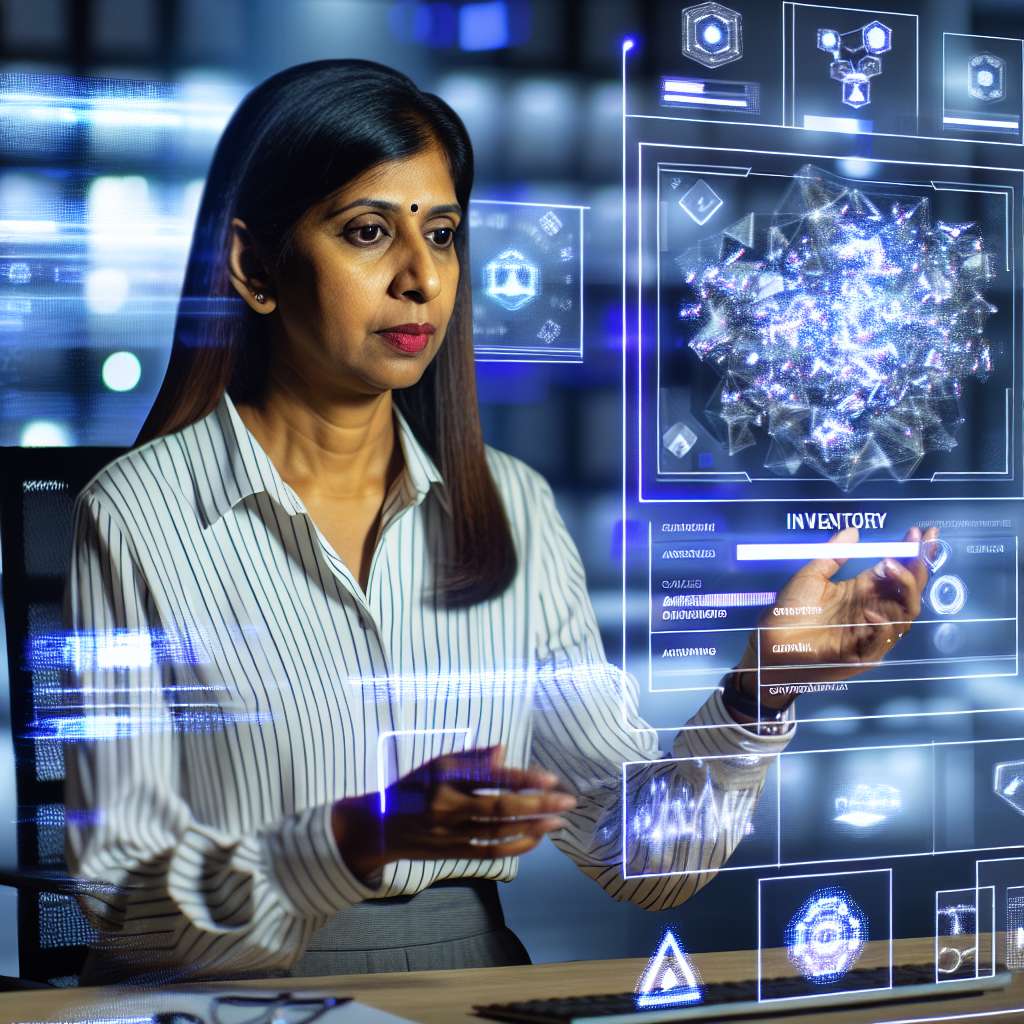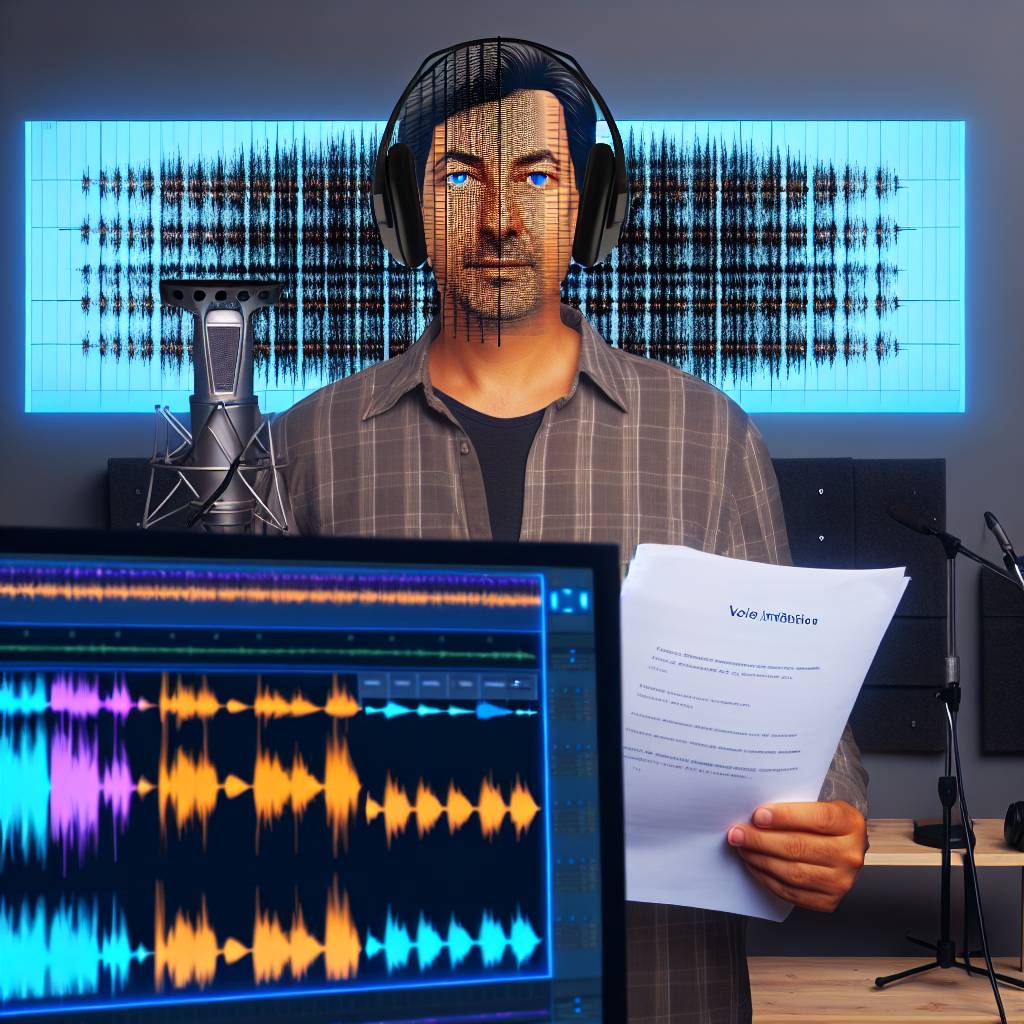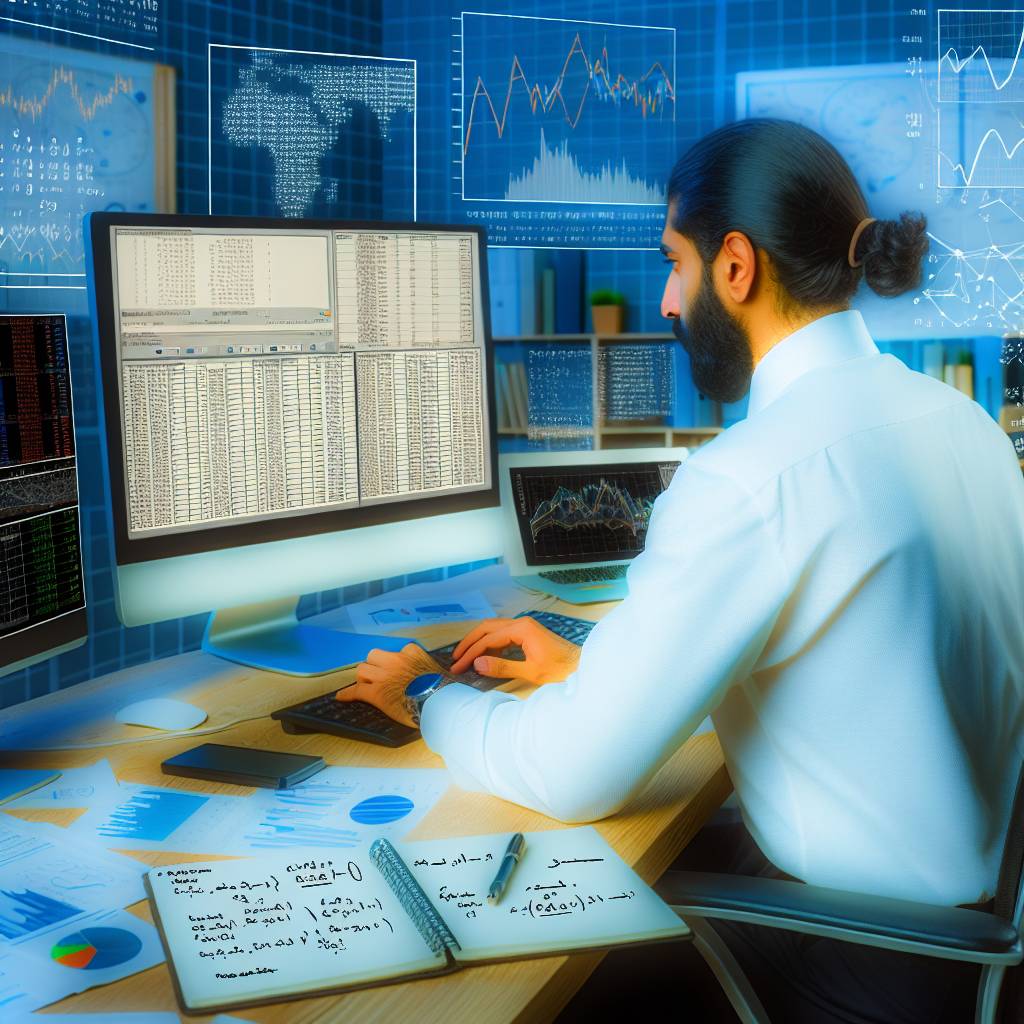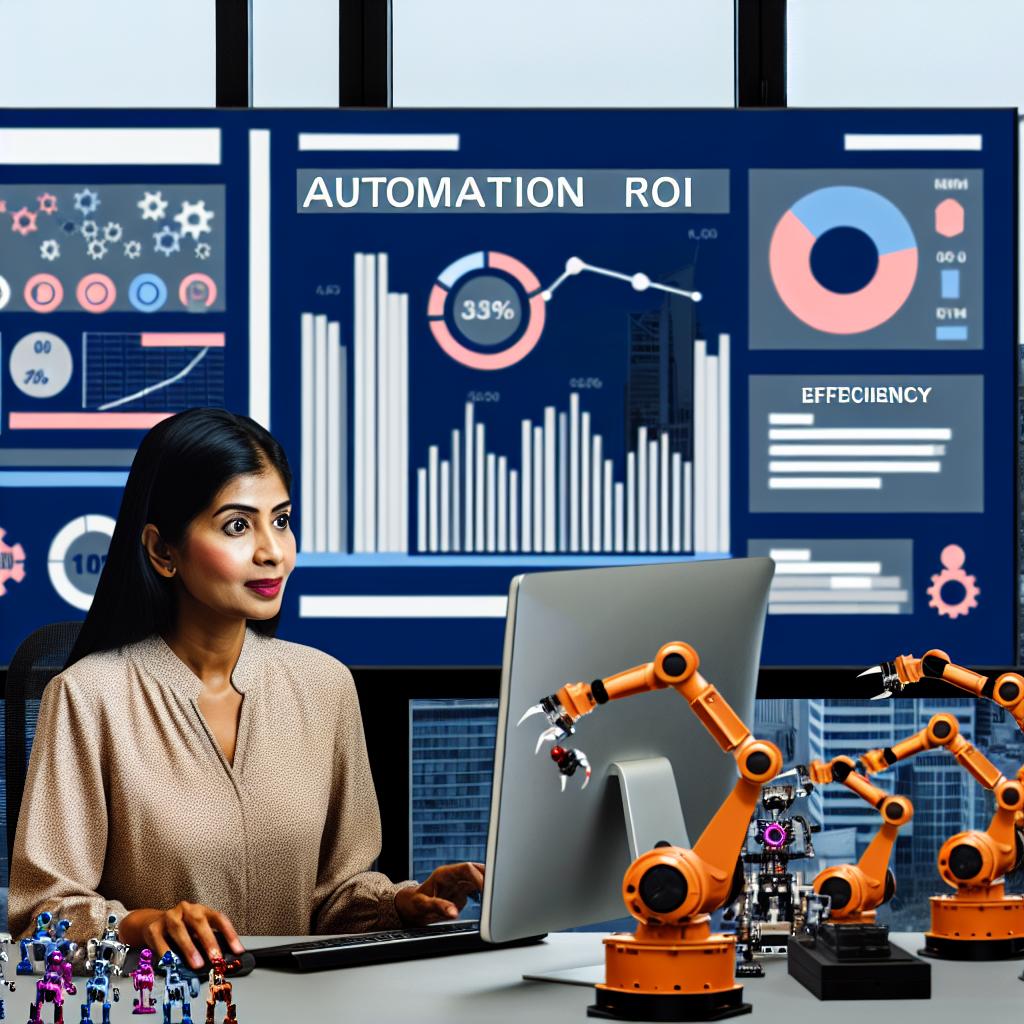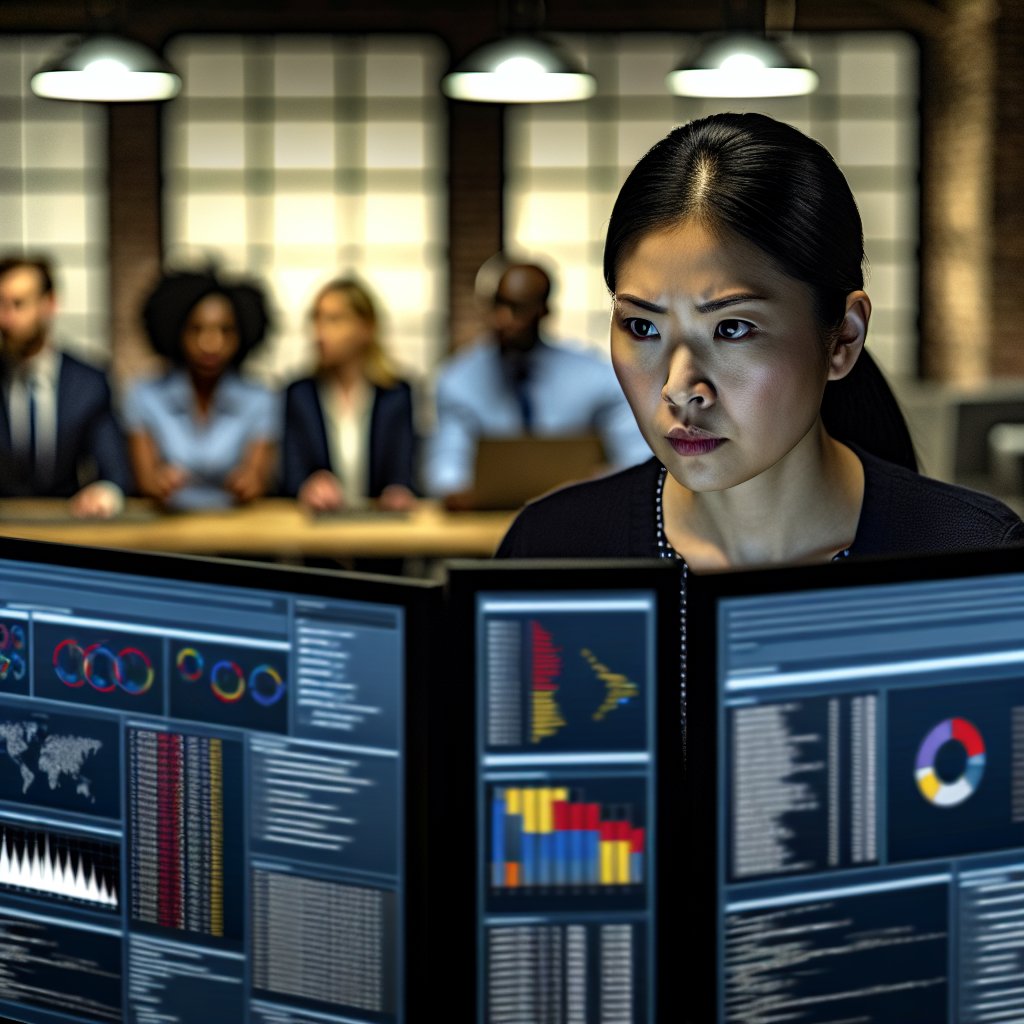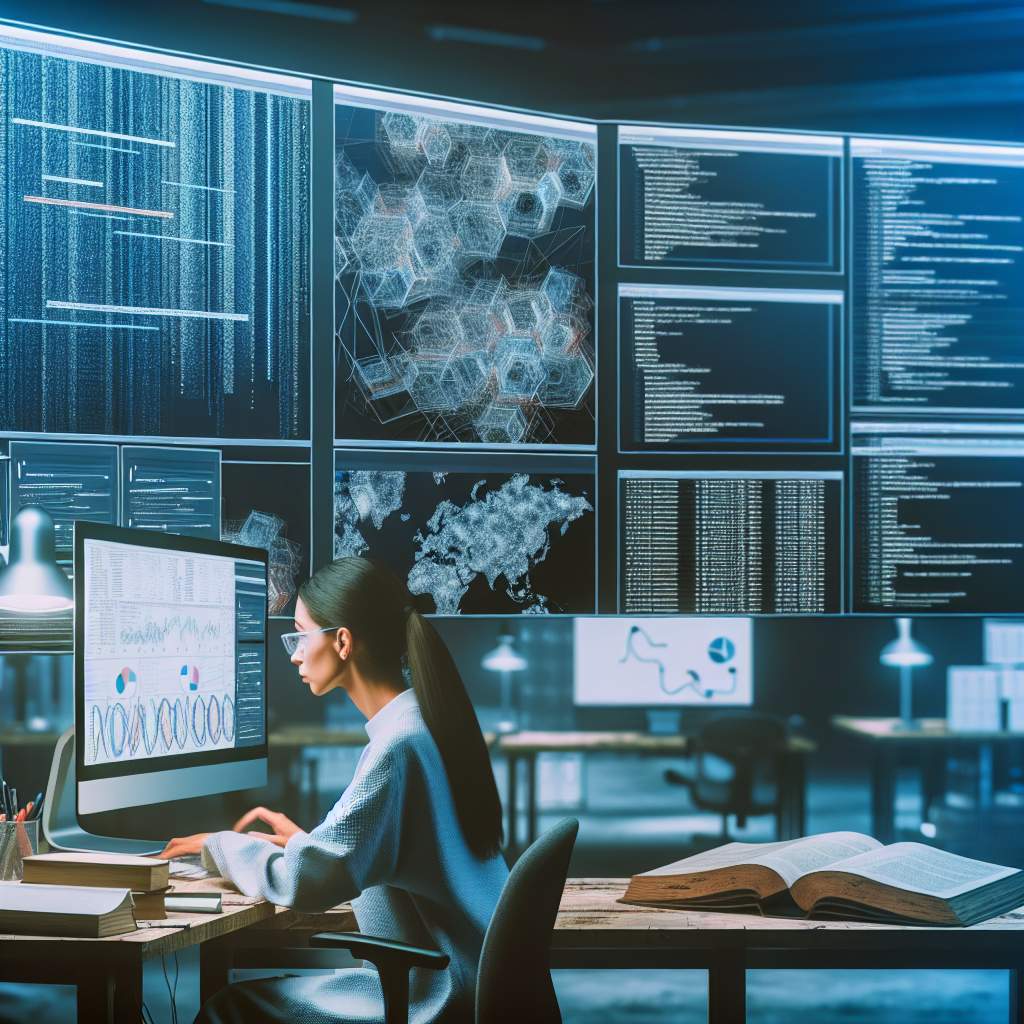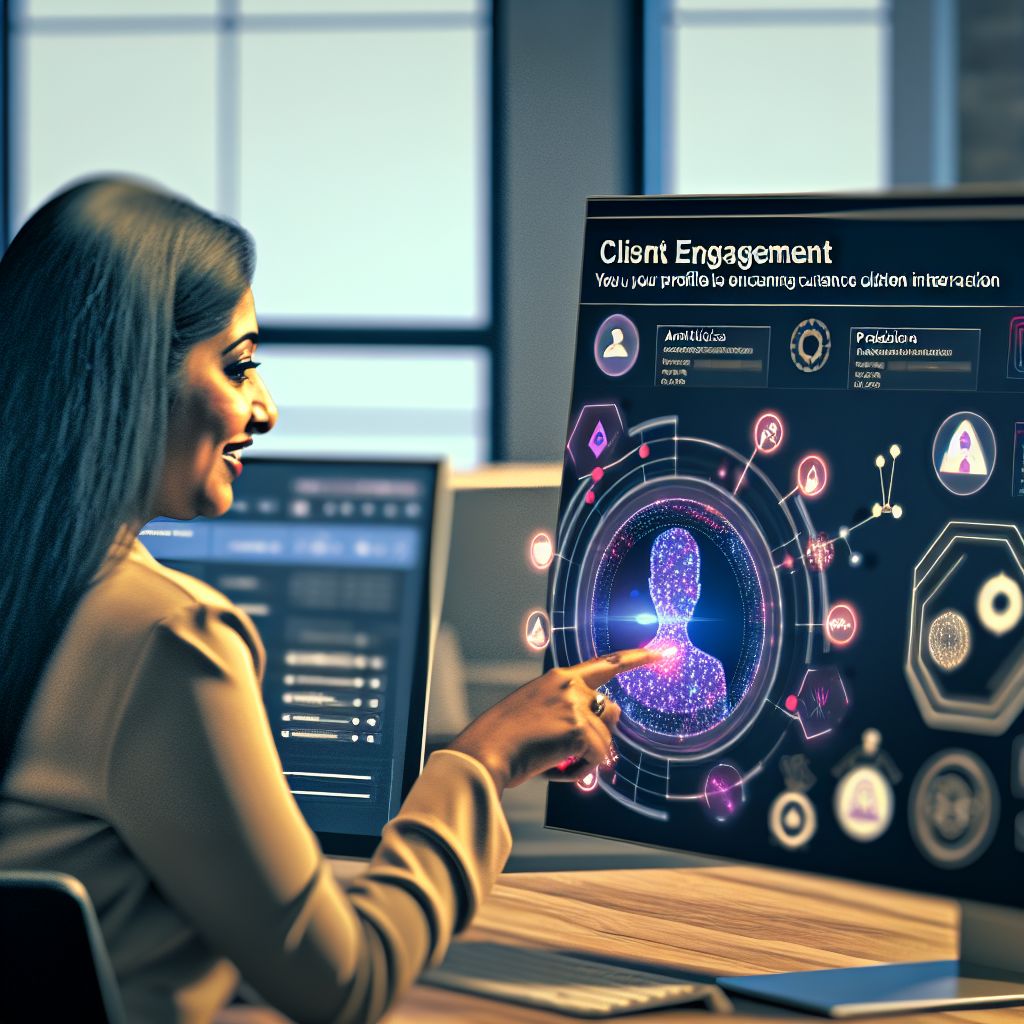Introduction
Let’s explore AI-powered image tools revolutionizing design efficiency
Overview of the importance of design in modern industries
In today’s competitive landscape, effective design plays a crucial role in various industries.
Businesses now recognize that striking visuals can enhance brand identity and customer engagement.
As a result, design has moved from a secondary aspect to a pivotal element for success.
AI-powered image tools as a transformative force in design
Artificial Intelligence has emerged as a transformative force in many sectors, especially in design.
Designers face increasing demands for speed and innovation in their work.
AI-powered image tools address these challenges by streamlining processes and improving outcomes.
Purpose of the blog: Exploring how these tools are enhancing design efficiency
This blog aims to explore how these advanced tools enhance design efficiency.
By automating repetitive tasks, they free up valuable time for creative exploration.
Designers can now focus on their core strengths, generating unique concepts rather than getting bogged down by mundane adjustments.
AI image tools offer powerful features such as automated image generation, intelligent editing, and personalized design recommendations.
With these technologies, users can create stunning visuals in a fraction of the time.
The ability to produce high-quality images expedites the design process, leading to quicker project turnaround times.
Moreover, these tools cater to diverse styles and preferences.
Designers can easily adapt and modify their work to meet client needs.
As a result, they achieve not only efficiency but also higher satisfaction rates with their clients.
Another significant benefit lies in data-driven design.
AI analyzes vast amounts of design data to identify trends and user preferences.
This analysis enables designers to make informed decisions, ensuring their work resonates with the target audience effectively.
Embracing AI-powered tools allows design teams to remain competitive.
These tools foster collaboration among team members by providing a centralized platform for creativity.
As a result, the synergy created through these technologies enhances the overall design quality.
Therefore, AI-powered image tools are reshaping the future of design.
They optimize workflows and inspire creativity, offering unprecedented efficiency in every step of the design process.
The revolution is here, and its impact is undeniable.
The Role of AI in Image Processing
Artificial Intelligence (AI) plays a crucial role in transforming how we process images.
It enhances our ability to analyze and manipulate visual data.
Various AI technologies drive this transformation, improving design efficiency across multiple sectors.
Below, we’ll explore the key technologies, algorithms, and techniques that enable these advancements in image processing.
AI Technologies Used in Image Processing
AI technologies harness the power of algorithms and large datasets to enhance image processing capabilities.
Here are some of the most effective technologies:
- Convolutional Neural Networks (CNNs): CNNs excel in image recognition tasks. They automatically learn features from images.
- Generative Adversarial Networks (GANs): GANs create new images based on training data. They work by pitting two neural networks against each other.
- Deep Learning: This method uses multi-layered neural networks. It allows for more complex data interpretation and greater accuracy.
- Computer Vision: This field enables machines to interpret and understand the visual world. It incorporates various AI techniques to identify objects, scenes, and activities.
- Image Segmentation: This technique breaks down an image into segments. It simplifies the representation of an image for easier analysis.
Key Algorithms and Machine Learning Techniques
A range of algorithms and techniques form the backbone of AI in image processing.
These methods significantly improve the efficiency of image design workflows.
Key algorithms include:
- Support Vector Machines (SVM): SVMs classify images by finding the optimal hyperplane for separating different classes.
- Random Forests: This ensemble method combines multiple decision trees. It provides improved accuracy in image classification tasks.
- k-Nearest Neighbors (k-NN): This algorithm classifies images based on proximity to training images. It is simple yet effective for basic image recognition.
- Image Restoration Algorithms: These methods focus on improving the quality of degraded images. They use techniques like denoising and deblurring to enhance clarity.
- Optical Character Recognition (OCR): OCR algorithms convert images of text into machine-encoded text. They are essential in document processing tasks.
How AI Interprets and Manipulates Visual Data
AI’s ability to interpret and manipulate visual data opens up new possibilities for designers.
We Design & Develop Websites, Android & iOS Apps
Looking to transform your digital presence? We specialize in creating stunning websites and powerful mobile apps for Android and iOS. Let us bring your vision to life with innovative, tailored solutions!
Get Started TodayHere’s how it works:
- Feature Extraction: AI systems identify critical features in images. These features can include edges, shapes, and textures.
- Pattern Recognition: AI recognizes patterns within visual data. It uses this capability to classify and categorize images effectively.
- Data Augmentation: AI can transform images to create variations. Techniques include rotation, flipping, and color adjustments.
- Image Synthesis: Utilizing GANs, AI generates new images. These images can resemble real objects or scenes, serving creative needs.
- Style Transfer: AI enables the application of artistic styles to images. This helps designers achieve unique visual effects without extensive manual work.
Benefits of AI in Image Processing
Integrating AI into image processing offers several advantages for designers and businesses.
Some notable benefits include:
- Increased Efficiency: AI algorithms automate tedious tasks. This allows designers to focus on creativity and innovation.
- Improved Accuracy: AI systems reduce human error in analysis. They enhance reliability in image recognition and processing tasks.
- Cost Reduction: AI minimizes resource requirements. Automated processes lower operational costs and reduce time spent on tasks.
- Scalability: AI-driven solutions can easily scale. Businesses can process large datasets without additional manpower.
- Enhanced Creativity: AI tools inspire new design possibilities. They provide novel perspectives and solutions to complex design challenges.
Challenges and Considerations
Despite its benefits, AI in image processing presents some challenges.
Understanding these challenges can help designers implement AI solutions more effectively:
- Data Quality: AI systems rely heavily on the quality of training data. Poor quality data can lead to inaccurate results.
- Bias in Algorithms: AI algorithms may reflect biases present in training data. This can affect the fairness and accuracy of outputs.
- Complexity of Implementation: Integrating AI into existing workflows can be complex. Organizations may face technical hurdles during implementation.
- Ethical Concerns: AI-generated images can raise ethical issues, especially regarding copyright and authorship.
- Cost of Adoption: Initial investment in AI tools can be high. Businesses must weigh these costs against potential benefits.
AI is fundamentally changing how we approach image processing.
From improved efficiency to new creative opportunities, its impact is profound.
By understanding the technologies, algorithms, and techniques, designers can harness AI’s potential effectively.
As advancements continue, AI will likely play an even larger role in shaping the future of design.
Read: Boost Customer Loyalty with Automated Social Proof & Feedback Tools
Benefits of AI-Powered Image Tools
AI-powered image tools are redefining the landscape of design.
They provide professionals with innovative ways to enhance their workflow.
This section delves into the most significant benefits these tools offer, reflecting on their impact, efficiency, and relevance.
Increased Speed of Design Processes
Speed is a crucial factor in the design world.
Clients often require quick turnarounds.
AI image tools streamline the design workflow effectively. Here are a few ways they achieve this:
- Automation of repetitive tasks reduces time spent on mundane activities.
- AI algorithms generate design layouts in a fraction of the time.
- Real-time feedback allows designers to make adjustments swiftly.
- Access to a vast library of templates accelerates project initiation.
These advantages lead to faster project completions.
Designers can accommodate more clients and projects.
Moreover, they can focus on high-level creative tasks instead of tedious manual work.
Enhanced Creativity and Design Capabilities
AI-driven tools inspire creativity in unique ways.
They provide designers with insights and suggestions.
These features foster innovative thinking, resulting in captivating designs.
Consider the following:
- AI can analyze design trends and suggest relevant elements.
- Integration of machine learning helps designers explore new styles.
- Collaboration features enhance group creativity by pooling ideas.
- Experimentation with different aesthetics becomes easier and more efficient.
With these capabilities, designers find it easier to push their creative boundaries.
They can produce work that stands out in a competitive landscape.
This transformation is evident across various industries, from marketing to graphic design.
Cost-Effectiveness Compared to Traditional Design Methods
Investing in AI-powered design tools also proves financially beneficial.
The initial investment might seem steep, yet the long-term savings are clear.
Here’s how they offer cost savings:
- Reduced labor costs since fewer designers are needed for complex projects.
- Less reliance on outsourcing due to in-house capabilities.
- Time savings lead to faster project turnover, increasing revenue opportunities.
- Lower software costs, with many AI tools available via subscription models.
By minimizing overhead expenses, businesses can allocate budgets more effectively.
They can focus on strategies that generate further growth.
This allows for investments in other critical areas of their operation.
Case Studies Highlighting Efficiency Improvements
Real-world examples demonstrate the effectiveness of AI-powered image tools.
Numerous businesses have implemented these technologies with remarkable success.
Let’s explore a few noteworthy case studies:
We Design & Develop Websites, Android & iOS Apps
Looking to transform your digital presence? We specialize in creating stunning websites and powerful mobile apps for Android and iOS. Let us bring your vision to life with innovative, tailored solutions!
Get Started Today- Design Agency “Creative Leap”: This agency adopted an AI tool to automate client presentations. They reported a 40% reduction in preparation time.
Clients appreciated faster responses and insightful presentations. - Marketing Firm “AdVantage”: By employing AI for ad creatives, AdVantage doubled the number of campaigns delivered monthly.
The AI identified what visuals resonated better, leading to impactful designs in short periods. - E-commerce Company “ShopWave”: ShopWave integrated AI tools for product image generation. This streamlined their catalog creation process.
They saw a 60% increase in new product listings per quarter.
These case studies underline the profound changes AI tools bring to the design efficiency of companies.
They highlight how innovative technologies reshape workflows for tangible results.
Incorporating AI-powered image tools into design processes yields numerous benefits.
The speed of design projects improves significantly.
Creativity flourishes as AI assists in exploring new ideas.
Moreover, the cost-effectiveness of these tools enables businesses to grow efficiently.
As more companies recognize these advantages, the adoption of AI tools in design continues to surge.
The data shows a definite trend toward embracing these technologies.
Ultimately, AI-powered image tools empower designers to work smarter, faster, and more creatively.
As we move forward, the future of design will undoubtedly be intertwined with artificial intelligence.
Professionals must adapt to this changing landscape.
Embracing these innovations will determine success in the design industry.
Read: Streamlining Web Development with Effortless Element Conversion Tools
Popular AI-Powered Image Tools
Overview of Leading AI Image Tools
AI-powered image tools have rapidly gained popularity in recent years.
These tools enhance design efficiency and creativity.
They serve various industries, from graphic design to marketing.
Several AI image tools have emerged as frontrunners in this space.
Each tool brings unique features and functionalities, catering to different user needs.
Below are some of the most popular AI-powered image tools currently available.
Comparison of Features and Functionalities
When comparing AI image tools, it’s essential to evaluate their features and functionalities.
Here’s a detailed look at each tool’s offerings.
Adobe Photoshop with AI Features
Adobe Photoshop remains a leading image editing tool.
The introduction of AI features significantly enhances its functionality.
- Content-Aware Fill: Automatically removes unwanted elements from images.
- Neural Filters: Applies complex transformations with simple adjustments.
- Sky Replacement: Replaces skies seamlessly for dramatic effects.
Canva with Magic Resize
Canva targets users who need quick, accessible design solutions.
Its user-friendly interface simplifies graphic design.
- Magic Resize: Automatically adjusts designs for different platforms.
- Template Library: Offers various pre-designed templates to choose from.
- Collaboration Tools: Enables team collaboration on projects in real-time.
DeepArt
DeepArt focuses on transforming photos into stunning artworks.
By leveraging neural networks, it provides unique artistic styles.
- Artistic Filters: Allows users to apply different artistic styles to images.
- High Resolution Outputs: Produces high-quality images suitable for prints.
- User-Friendly Interface: Makes it easy for non-designers to create art.
RunwayML
RunwayML caters to creatives and developers who utilize machine learning.
It integrates various AI tools for video and image creation.
- Text-to-Image Generation: Creates images based on textual descriptions.
- Object Removal: Quickly removes objects from videos and images.
- Real-Time Collaboration: Facilitates collaboration in creative projects.
Daz 3D
Daz 3D is geared towards 3D art creation and character design.
It leverages AI for enhanced rendering techniques.
- Customizable Models: Offers extensive options for character customization.
- AI-Driven Animation: Simplifies the animation process with AI support.
- Rich Asset Library: Includes numerous assets for faster design.
User Demographics and Target Markets
Each AI image tool serves distinct user demographics and targets specific market segments.
Understanding these can help users select the best tool for their needs.
Below is an overview of the target markets for each tool.
Adobe Photoshop with AI Features
Adobe Photoshop appeals primarily to professionals and serious hobbyists.
We Design & Develop Websites, Android & iOS Apps
Looking to transform your digital presence? We specialize in creating stunning websites and powerful mobile apps for Android and iOS. Let us bring your vision to life with innovative, tailored solutions!
Get Started TodayIts features attract photographers, graphic designers, and digital artists.
Users value its advanced editing capabilities and customization options.
Canva with Magic Resize
Canva targets small business owners, marketers, and social media managers.
Its accessibility and templates make it attractive to non-designers.
Users appreciate its efficiency in creating visually appealing content quickly.
DeepArt
DeepArt is popular among artists, social media influencers, and casual users.
Its unique feature of transforming photos into art appeals to creative individuals.
Users enjoy showcasing their personal styles through the tool.
RunwayML
RunwayML attracts creatives, developers, and content creators.
Its focus on machine learning integrations appeals to tech-savvy users.
Artists who work with video and image assets find it particularly useful.
Daz 3D
Daz 3D caters to 3D artists, game developers, and animators.
Its character customization and animation tools support game design projects.
Users in creative industries appreciate its comprehensive asset library for 3D design.
The rise of AI-powered image tools has transformed the design landscape.
Each tool offers unique features suited for various user demographics.
By understanding their functionalities and target markets, users can select the best tool for their specific design needs.
As technology continues to evolve, the role of AI in image design will only grow, enhancing creativity and efficiency.
Read: Revolutionizing Web Content: Seamless API for PDF & Image Generation

Impact on Various Design Industries
AI-powered image tools are changing the design landscape.
These innovative tools enhance efficiency across multiple sectors.
Graphic design, marketing, photography, fashion, and architecture are witnessing significant transformations.
The integration of AI technology streamlines processes and fosters creativity.
Designers can now focus on core tasks while AI handles repetitive functions.
Graphic Design
In graphic design, AI tools optimize the creative workflow.
Designers harness algorithms to generate visuals quickly.
These tools offer features such as:
- Automated Image Editing: AI can edit images faster than manual methods.
- Template Generation: Platforms create templates tailored to specific brand guidelines.
- Color Palette Suggestions: Tools analyze trends and suggest palettes that resonate with target audiences.
- Typography Selection: AI can recommend typefaces that enhance readability and brand identity.
With these capabilities, designers can produce high-quality work in less time.
AI tools also allow for experimentation.
Designers can explore different styles and formats without starting from scratch.
As a result, the creative process becomes more dynamic and engaging.
Marketing
Marketing professionals experience a similar transformation.
AI-powered image tools enable teams to create compelling content.
Enhanced visual storytelling becomes possible, driving engagement and conversions.
Some applications of AI in marketing include:
We Design & Develop Websites, Android & iOS Apps
Looking to transform your digital presence? We specialize in creating stunning websites and powerful mobile apps for Android and iOS. Let us bring your vision to life with innovative, tailored solutions!
Get Started Today- Ad Creation: Automated tools generate visuals for ad campaigns based on performance data.
- Content Distribution: AI analyzes audience preferences to recommend the best visuals for various platforms.
- Performance Tracking: Tools assess which images yield the highest engagement rates.
- Brand Consistency: AI can ensure that all visuals adhere to brand guidelines across different channels.
These advancements empower marketers to build stronger connections with their audiences
They can tailor visuals to meet demographic needs.
AI analysis streamlines the decision-making process, ensuring that creative assets are effective and impactful.
Photography
Photography has also embraced AI technology.
Photographers leverage AI-powered image tools for numerous tasks.
Key applications in this field include:
- Image Enhancement: AI-based software can automatically adjust lighting, contrast, and color.
- Object Recognition: Tools help photographers identify subjects quickly and enhance focus.
- Batch Editing: Photographers can apply edits to large sets of images simultaneously.
- Style Transfer Techniques: Photographers can apply artistic filters inspired by famous art styles instantly.
These tools free photographers from labor-intensive tasks, allowing them to focus on creativity.
As a result, they can produce visually stunning images with less effort.
The use of AI not only improves productivity but also broadens the creative possibilities.
Fashion Design
The fashion industry benefits immensely from AI-powered image tools.
Designers are using these tools for various purposes, such as:
- Trend Prediction: AI analyzes social media and fashion shows to predict upcoming trends.
- Virtual Try-Ons: Consumers can use AR features to visualize clothing items on themselves.
- Pattern Generation: Algorithms create unique patterns based on existing designs.
- Costume Design: AI tools assist in visually modeling costumes for film and theater productions.
By integrating AI tools, fashion designers streamline the design process.
They can create collections that captivate audiences and meet market demands.
Additionally, these tools can enhance sustainability in fashion by reducing waste during the prototyping phase.
Architecture
Architecture is undergoing significant changes due to AI advancements.
Architects can leverage AI to enhance their design capabilities, including:
- 3D Modeling: AI-driven tools simplify the creation of intricate building models.
- Environmental Analysis: AI assesses environmental impacts, helping architects design sustainable structures.
- Space Optimization: Algorithms suggest layout modifications to maximize space efficiency.
- Virtual Reality Visualization: Clients can experience designs in immersive environments before construction begins.
These capabilities lead to innovative architectural designs that meet modern needs.
AI tools are helping architects save time and costs while delivering exceptional results.
Incorporating client preferences early in the design phase results in enhanced satisfaction.
Future Trends and Anticipated Changes
The future of AI in design holds exciting possibilities.
As technology develops, we can expect more advanced features and applications.
Anticipated trends include:
- Integration of Machine Learning: AI tools will become more adaptive, learning from user preferences.
- Augmented Reality (AR) Enhancements: AR will enable immersive experiences, transforming how designs are created and presented.
- Collaborative Platforms: Designers will utilize tools that facilitate collaboration on a global scale.
- Focus on Personalization: AI will allow for tailored designs catering to individual preferences and needs.
- Greater Accessibility: As AI tools become more affordable, smaller enterprises will also benefit from advanced technologies.
In fact, AI-powered image tools are redefining design efficiency across various industries.
They empower professionals to innovate while minimizing time-consuming tasks.
As these technologies continue to evolve, the design landscape will further transform, paving the way for exciting advancements.
Read: Maximize Website Speed & Core Web Vitals with Cutting-Edge Tools
Challenges and Limitations of AI in Design
While AI-powered image tools significantly enhance design efficiency, they also present several challenges and limitations.
Understanding these drawbacks is crucial for designers looking to integrate AI into their workflows.
The following sections explore some of these challenges, including ethical considerations, the importance of human creativity, and the risks of over-reliance on technology.
Potential Drawbacks and Ethical Considerations
AI systems can sometimes produce unexpected results.
Designers must be aware of these limitations. Here are some potential drawbacks of AI in design:
- Bias in Algorithms: AI tools often learn from existing data, which can contain biases. These biases can emerge in the final design outcomes.
- Intellectual Property Issues: AI-generated designs may raise questions about ownership. Determining copyright can become complex when using AI tools.
- Lack of Context Understanding: AI struggles with nuances that a human designer would easily grasp. This lack of contextual understanding may lead to inappropriate design choices.
- Job Displacement Concerns: As AI tools automate tasks, some designers worry about job security. This concern can create tension within the industry.
- Transparency Issues: Many AI models operate as “black boxes.” Designers might not fully understand how decisions are made, complicating the design process.
Ethical considerations are crucial when using AI in design.
Designers must consider how their choices impact society.
They should be mindful of the messages their designs convey and the inclusivity of their designs.
The Importance of Human Creativity
Despite its analytical prowess, AI cannot replicate human creativity.
We Design & Develop Websites, Android & iOS Apps
Looking to transform your digital presence? We specialize in creating stunning websites and powerful mobile apps for Android and iOS. Let us bring your vision to life with innovative, tailored solutions!
Get Started TodayDesigners bring unique perspectives and emotions to their work.
This human touch is essential for successful design outcomes
Here are several reasons why human creativity matters:
- Emotional Connection: Human designers create work that resonates emotionally with audiences. This connection is vital for effective communication through design.
- Unique Perspectives: Each designer has a distinct viewpoint shaped by personal experiences. This diversity fosters innovation and originality.
- Intuition and Instinct: Designers often rely on gut feelings during the creative process. This intuition cannot be replicated by AI.
- Storytelling Abilities: Human designers excel at storytelling through visuals, giving deeper meaning to their work. AI lacks the capability to weave narratives effectively.
- Cultural Sensitivity: Understanding cultural contexts is crucial in design. Human designers can navigate these complexities better than AI.
AI can assist designers but should not replace the human element in design.
The best results occur when AI and human creativity collaborate harmoniously.
This partnership can foster new ideas while preserving the designer’s unique voice.
Over-Reliance on Technology and Loss of Design Skills
Technology offers powerful tools for efficiency, yet over-reliance can lead to a decline in essential design skills.
Designers must maintain a balance between utilizing AI and honing their abilities.
The following points highlight the risks associated with dependence on AI:
- Skill Erosion: As AI automates tasks, designers may lose fundamental skills, such as sketching and concept development. Developers must practice traditional skills to keep them sharp.
- Decreased Problem-Solving Abilities: Relying solely on AI tools can diminish designers’ analytical capabilities. A lack of practice in problem-solving can hinder their versatility.
- Creativity Stagnation: Overusing AI for creative generation may stifle individual creativity. Continually depending on AI-generated ideas can lead to creative blocks.
- Disconnection from Craftsmanship: Designers may lose touch with the physical aspects of their work. This detachment can result in less thoughtful designs.
- Loss of Design Intent: When designers rely on AI to handle specifics, they risk losing their design intent. This disconnect can lead to irresponsible or uninspired work.
Therefore, instead of fully relying on AI tools, designers should view them as assistants.
Using AI as a complement to their skills encourages personal growth and fosters a more profound understanding of the design process.
AI-powered image tools can undoubtedly revolutionize design efficiency.
However, designers must acknowledge the challenges and limitations of these technologies.
By being aware of potential drawbacks, valuing human creativity, and avoiding over-reliance on technology, designers can achieve the best outcomes in their work.
The future of design lies in a balanced approach that leverages AI while preserving the essential elements of creativity and craftsmanship.
Through a thoughtful partnership, designers can enhance their productivity and innovation, creating designs that resonate deeply with their audiences.
Integrating AI Tools into Existing Workflow
As industries evolve, integrating AI tools into existing workflows becomes essential.
Designers and businesses must adapt rapidly to keep up with the latest technology trends.
Here are effective strategies for seamless integration:
Strategies for Designers and Businesses to Adopt AI Tools
Integrating AI tools boosts productivity and enhances creativity.
Below are crucial strategies for adoption:
- Identify specific needs: Assess your workflow to pinpoint areas that can benefit from AI tools. Look for repetitive tasks that consume time.
- Research available tools: Explore different AI tools tailored for design. Compare features, usability, and cost to find the best fit.
- Set clear goals: Define objectives for using AI tools. Establish measurable outcomes, such as reducing design time or improving design quality.
- Start small: Implement AI tools in small projects first. Gradually expand usage as proficiency increases within teams.
- Develop a feedback loop: Create channels for team members to share their experiences. Use feedback to refine tool usage and workflows continuously.
- Foster a culture of innovation: Encourage teams to experiment with AI. Promote creativity and out-of-the-box thinking in every project.
Training and Upskilling Teams to Effectively Use AI Technology
Adopting AI tools requires a knowledgeable workforce.
Training and upskilling are crucial for successful implementation:
- Organize workshops: Host regular workshops to introduce teams to new AI technologies. Practical demonstrations are effective learning methods.
- Utilize online courses: Encourage team members to take online courses. Many platforms offer courses specific to using AI in design.
- Assign AI champions: Designate team members as AI champions. They can lead training sessions and help others navigate new tools.
- Encourage peer-to-peer learning: Foster collaboration by pairing experienced users with novices. Sharing knowledge improves overall team competency.
- Provide access to resources: Create a library of materials on AI tools. Include documentation, case studies, and tutorials for reference.
- Promote continuous learning: Cultivate an environment that values skill development. Offer incentives for completing training and upskilling initiatives.
Examples of Successful Integration from Real-World Companies
Several companies have successfully integrated AI tools into their design processes.
These examples offer valuable insights:
- Adobe: Adobe integrated AI into its Creative Cloud Suite. Adobe Sensei automates repetitive tasks, improving user efficiency.
- Nike: Nike uses AI to design custom footwear. Customers can personalize designs in real-time, boosting engagement and satisfaction.
- Canva: Canva’s AI tools streamline graphic design. Users access templates and receive automatic design suggestions, saving time.
- Airbnb: Airbnb uses AI to optimize listings and images. AI analyzes user behavior to improve design and user experience.
- Netflix: Netflix employs AI to create personalized thumbnails. The algorithm selects images that attract individual viewers.
- Spotify: Spotify uses AI-driven playlists tailored to users’ preferences, increasing engagement and satisfaction.
AI integration enhances efficiency, creativity, and innovation across these companies.
Businesses can stay competitive by adopting similar strategies and training their teams to fully leverage AI.
Successful AI integration in design processes offers measurable benefits, optimizing workflows, improving design quality, and enhancing user experiences.
By learning from these examples, other organizations can confidently adopt AI.
The future of design depends on the effective use of AI.
Companies and designers willing to adapt will lead in transforming workflows and achieving unmatched creative outcomes.
They will revolutionize how design teams function, making it essential to embrace this significant shift.
With innovation and automation, teams unlock endless possibilities.
The design landscape becomes more dynamic, with AI tools as powerful allies.
As industries evolve, businesses that purposefully integrate AI will thrive.
We Design & Develop Websites, Android & iOS Apps
Looking to transform your digital presence? We specialize in creating stunning websites and powerful mobile apps for Android and iOS. Let us bring your vision to life with innovative, tailored solutions!
Get Started TodayFuture of AI in Design
The future of AI in the design industry looks incredibly promising.
Predictions indicate a significant evolution in AI image tools.
These advancements will likely reshape how designers work.
As we look ahead, several key trends and technologies emerge.
Understanding these trends can help designers prepare for future changes.
Predictions for the Evolution of AI Image Tools
The evolution of AI image tools will focus on several critical areas:
- Enhanced Customization: Future AI tools will provide higher levels of customization. Users will have greater control over styles, themes, and formats.
- Improved Collaboration: AI will facilitate better collaboration among designers. Tools will allow seamless sharing and real-time feedback.
- Increased Automation: More tasks will become automated within the design process. Designers can focus on creativity while AI handles repetitive tasks.
- Intuitive Interfaces: New tools will feature more intuitive interfaces. Designers will require minimal training to use these advanced systems.
- Cross-Platform Functionality: Future tools will support a variety of platforms and devices. This flexibility will improve accessibility and usability.
These predictions demonstrate the potential transformation of design work.
As AI becomes more sophisticated, designers will benefit immensely.
The focus will shift towards creativity, allowing for innovative solutions.
Speculation on New Technologies on the Horizon
Looking forward, several new technologies are on the horizon:
- Generative Design: Generative design tools will leverage algorithms to create multiple design options. This technology will allow designers to explore various possibilities quickly.
- Real-Time Feedback Systems: Future AI tools will provide designers with instant feedback. This will enable quick adjustments and improved decision-making.
- Augmented Reality (AR) Integration: The integration of AR will revolutionize design presentations. Designers can showcase their work in immersive environments.
- Advanced Image Recognition: Improved image recognition capabilities will identify design patterns. This will enhance the learning process for AI tools.
- Machine Learning Enhancements: Ongoing developments in machine learning will refine AI algorithms. This will result in more accurate predictions and outputs in design tools.
These upcoming technologies represent exciting new frontiers for designers.
By embracing these tools, the industry can foster innovation and creativity.
Designers will have the ability to push boundaries further than ever before.
The Enduring Role of Human Designers in an AI-Enhanced Landscape
While AI tools will advance significantly, the role of human designers remains crucial.
The human touch will always be important in creative fields.
Here are some reasons why human designers will endure:
- Creativity and Emotion: AI lacks the innate creativity and emotional understanding of humans. Designers infuse their work with uniquely human perspectives.
- Strategic Thinking: Human designers excel in strategic thinking. They understand market trends and audience needs better than AI.
- Personal Connection: Designers create connections with clients and users. This relationship is essential for successful outcomes.
- Ethical Considerations: Human designers can navigate complex ethical issues in design. They ensure that their work aligns with societal values.
- Cultural Awareness: Understanding cultural contexts is vital in design. Human designers bring significant insights that AI cannot replace.
Despite the growing influence of AI, human creativity and intuition will always be valuable.
Designers will lead the charge in combining technology with artistry.
They will continue to shape and define the design landscape.
Embracing the Future
As we look to the future, embracing AI in design becomes crucial.
Designers must stay informed about emerging tools and technologies.
Understanding the benefits and limitations of AI will empower designers.
This knowledge will foster collaboration between humans and machines.
Ultimately, the future of design lies in blending human creativity with advanced AI capabilities.
By preparing for this evolving landscape, designers can thrive.
They can leverage AI tools to enhance productivity without losing their unique voice.
The synergy of human talent and AI technology holds immense potential for innovation.
Together, they will create designs that resonate with audiences around the world.
Conclusion
Recap of the transformative power of AI in design
AI technologies have fundamentally altered the design landscape.
These tools enhance efficiency and creativity exponentially.
Designers now access invaluable resources that streamline tedious tasks.
Routine image editing and layout adjustments take mere moments.
Such advancements allow designers to focus on more innovative aspects of their work.
The integration of AI definitely brings transformative power.
Automated suggestions can propose design elements based on user preferences.
We Design & Develop Websites, Android & iOS Apps
Looking to transform your digital presence? We specialize in creating stunning websites and powerful mobile apps for Android and iOS. Let us bring your vision to life with innovative, tailored solutions!
Get Started TodayThese recommendations assist designers in making informed choices swiftly.
Data-driven insights enhance the overall design process significantly.
Designers utilize AI not just to create, but to innovate.
Final thoughts on balancing technology with human input
However, it’s vital to balance technology with human creativity.
AI tools are powerful companions, yet they lack the nuances of human emotion.
Designers must infuse personal style and intuition into their work.
This human touch enriches designs and connects with audiences effectively.
Encouragement for designers to stay informed and embrace AI advancements
As AI continues to evolve, staying informed becomes essential.
Designers should be proactive in learning about new tools and advancements.
Engaging with AI technologies can open new avenues for creativity.
Embracing these changes results in exceptional design outcomes.
The collaboration between AI and human designers heralds a new era in design efficiency.
The future of design holds enormous potential through continued integration of AI.
Designers who adapt and innovate while leveraging AI will thrive.
The pathway forward invites exploration, creativity, and mastery in design.
Before You Go…
Hey, thank you for reading this blog post to the end. I hope it was helpful. Let me tell you a little bit about Nicholas Idoko Technologies.
We help businesses and companies build an online presence by developing web, mobile, desktop, and blockchain applications.
We also help aspiring software developers and programmers learn the skills they need to have a successful career.
Take your first step to becoming a programming expert by joining our Learn To Code academy today!
Be sure to contact us if you need more information or have any questions! We are readily available.
Put Your Tech Company on the Map!
Get featured on Nicholas Idoko’s Blog for just $200. Showcase your business, boost credibility, and reach a growing audience eager for tech solutions.
Publish Now
